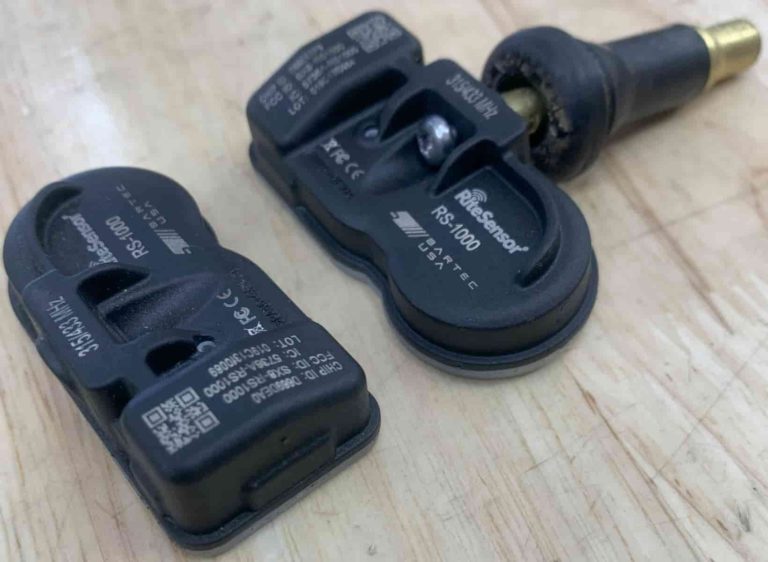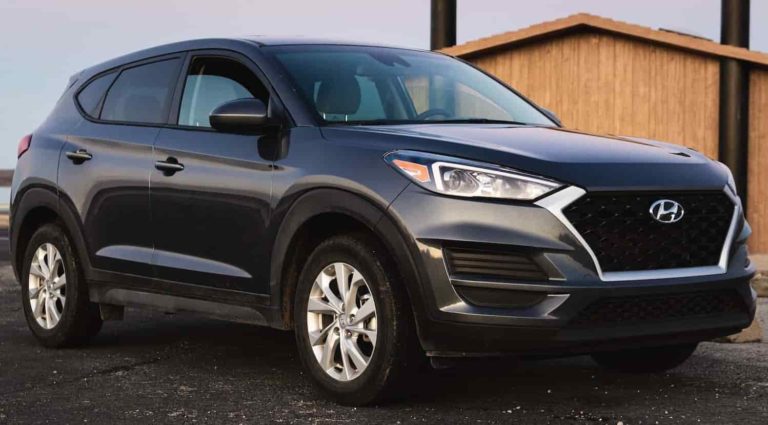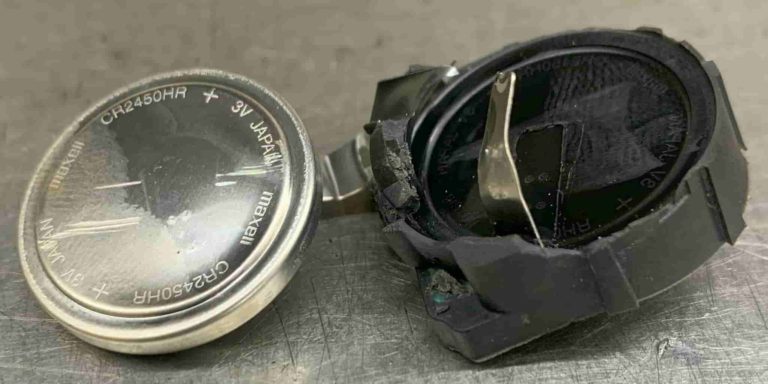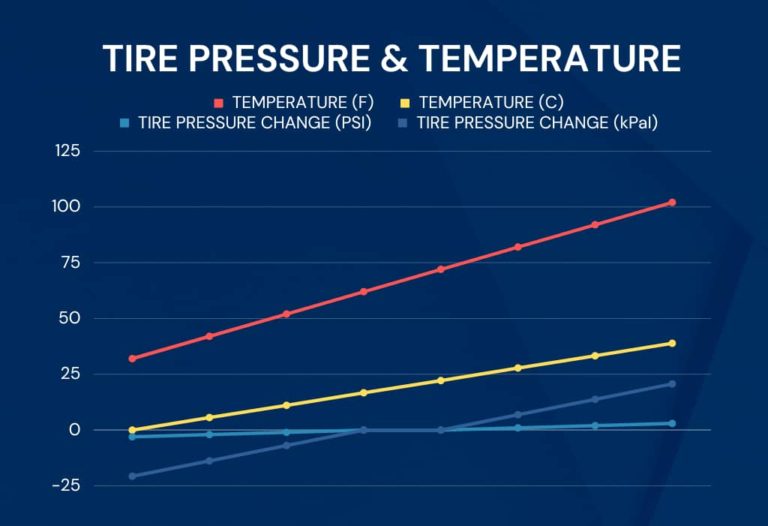Introduction
Welcome to our comprehensive guide on resetting the Hyundai Tucson tire pressure light. But before we dive into the step-by-step process, let’s take a moment to understand one of the most underrated features of your vehicle – the Tire Pressure Monitoring System (TPMS). This intelligent system keeps a vigilant eye on your tire pressure, ensuring optimal performance, fuel efficiency, and most importantly, your safety. It’s like having a personal tire expert onboard working tirelessly to keep you, your passengers, and your vehicle safe on every journey. This guide helps you understand its intricate mechanics, common issues, and effective troubleshooting, empowering you to address your vehicle’s needs before they crescendo into a cacophonous car problem.
What is the Hyundai Tucson Tire Pressure Light?
The Hyundai Tucson tire pressure light is a small, yet significant warning indicator on your vehicle’s dashboard. It’s a part of the Tire Pressure Monitoring System (TPMS), designed to alert you when the pressure in one or more of your tires is too low or too high. This little light is a big deal! It’s your first line of defense against unsafe driving conditions and tire wear caused by incorrect tire pressure.
How Does the Hyundai Tucson Tire Pressure Monitoring System work?
The Hyundai Tucson TPMS operates in a pretty straightforward manner:
Monitoring: Each tire (including the spare in some models) in your Hyundai Tucson is equipped with a tire pressure sensor. This sensor constantly monitors the air pressure and temperature inside each tire.
Detecting Pressure Variations: If the air pressure in one or more of your tires drops 25% or more below the recommended level set by Hyundai, or if it becomes too high, the sensor detects this significant change.
Signal Transmission: Upon detecting a pressure anomaly, the sensor transmits a signal to the car’s computer system.
Warning Light Illumination: Once the car’s computer system receives this signal, it will trigger the TPMS warning light on your dashboard. The light is the yellow exclamation mark.
Identification of Affected Tire(s): Your information display will provide your current tire pressures.
Corrective Action: Upon seeing the TPMS light, you should stop as soon as it’s safe to do so and check your tire pressures.
Remember, the TPMS is a preventive safety feature. It’s there to alert you of potential issues before they become major problems. Regularly checking your tire pressure and responding promptly to TPMS alerts is highly recommended.
Why Does the Hyundai Tucson Tire Pressure Light Come On?
The Hyundai Tucson TPMS light can turn on for various reasons, signaling potential issues that require attention. Here’s a comprehensive list of potential causes:
Common Reasons Why the Hyundai Tucson TPMS Comes On
Seasonal temperature changes: A drop in ambient temperature can cause tire pressure to decrease, triggering the warning light.
Tire puncture or leak: A sharp object or road debris like a nail or screw may puncture a tire, causing air loss which will of course activate the warning light.
Faulty tire pressure sensor: Damaged or malfunctioning sensors may provide inaccurate readings, resulting in a false alert. The only way to determine which sensor is faulty is to scan each sensor with a TPMS diagnostic tool.
Valve stem issues: A damaged or leaking valve stem can lead to gradual pressure loss and eventual activation of the tire pressure light. They make kits to replace the rubber gasket that usually goes bad.
Tire damage: Impact from potholes or hitting a curb can cause structural damage like tire bubbles, leading to pressure loss.
Sensor battery life: TPMS sensors are battery-powered, and over time, batteries die. (they usually last anywhere from 5-10 years) This will cause the tire pressure light to turn on. Again, you must use a diagnostic tool to determine which sensor is dead or dying.
Recent tire rotation or replacement: If the tires have been recently rotated or replaced, the TPMS may need recalibration to avoid false alerts. Sometimes the vehicle’s computer may think the front tires are in the rear and rear in the front after a rotation.
Wheel or rim issues: Damaged, corroded, or cracked wheels or rims can lead to air leaks and pressure loss. This is very common with low profile tires.
Altitude changes: Climbing or descending in elevation can affect tire pressure and trigger the TPMS warning. An additional 1.5 Psi per Km above sea level is required.
Natural pressure loss: Tires lose air pressure over time due to temperature changes and permeation. Tire dry-rot will happen to tires that sit.
Electrical problems or software issues within the car’s TPMS system. Occasionally the system may have a software update from Hyundai.
Snow Tires: If you have a separate pair of wheels/rims for your snow tires, you can either transfer the sensors from your summer wheels or acquire an additional set of 4 sensors for the second pair of wheels/rims. However, if you are using the same wheels for both sets of tires, there is no need to be concerned about this.
Step-by-Step Guide: How to Reset the Hyundai Tucson Tire Pressure Light
Step 1: Check and Adjust the Tire Pressure
The Hyundai Tucson doesn’t come with a dedicated button for resetting the tire pressure. To turn off the tire light, you need to ensure all four tires are filled to the appropriate pressure levels. You can use the Mode button on your steering wheel to access the tire pressure display. Make sure you fill each tire to exactly 35 Psi. It’s important to adjust your tire pressure only when the tires are cold, meaning they haven’t built up heat yet. This is usually before going on long drives or after your car has been parked for a couple of hours.
2023 Hyundai Tucson Tire Pressure and Size
Tire Size | FRONT PSI | FRONT PSI |
235/65R17 | 35 | 35 |
235/55R19 | 35 | 35 |
SPARE TIRE | 60 | 60 |
Step 2: Drive the Car
Once you’ve filled your tires to the suggested cold pressure, go ahead and take your Tucson for a drive. Drive for a few minutes at speeds over 20 mph. You might see a message on your dashboard LCD saying “drive to display.” As you keep driving, the tire pressure light should turn off, and your tire pressures will be displayed on the LCD. If the light doesn’t go off right away, just continue driving for a few more minutes.
Step 3: Re-Check Tire Pressure
If the tire pressure light remains on after following steps 1 and 2, double-check your tire pressure to ensure they’re still at the exact level you set them to. If not, there might be a leak in the tire or valve stem.
What Tools Do You Need to Reset the Hyundai Tucson TPMS?
The only tool required is an accurate tire pressure gauge. TPMS tools are only necessary in the Tucson when there is a problem with the system and you need to diagnose it. For example, if you have a TPMS malfunction and you need to diagnose the problem by finding out which tire sensor is faulty you will need a TPMS diagnostic tool. You will also need a TPMS tool if you are replacing a tire pressure sensor.
Troubleshooting the Hyundai Tucson Tire Pressure Light
What to Do When the TPMS Light Won't Reset
If the tire light turns off after inflating the tires but then comes back on, you most likely have a tire leak. If the tire pressure light blinks or flashes before staying on, it indicates that your tire pressure system is malfunctioning.
There are a few things you can do if the tire light won’t reset. First, you need to re-check your pressure in all of your tires. Make sure they are at the exact pressure you set them to. If any tire is below the pressure you set them to, you likely have a leak of some kind. Another option you can try is overfilling your tires by about 10 Psi more than is recommended. This may “wake up” your sensors. So, try filling your tucson tires to 45 Psi, drive the car for 10 minutes. Don’t forget to release the excess air afterwards. Generally there are only 3 possible reasons your tire pressure light won’t reset: a leak in the tire, valve stem or bead seal. A malfunction or faulty tire pressure sensor. Or an issue with the TPMS receiver module.
Reset the Hyundai Tucson ECU
If you’ve exhausted all options and nothing seems to reset the tire light, you can disconnect the main 12-volt battery. Start with the negative terminal to avoid any short circuits (you’ll need a 10 or 12mm wrench to loosen the terminal). This will cut off power to the ECU (engine control unit), which will erase any error codes stored by the computer (The tire pressure light is an error code). Disconnecting the battery will erase the computer’s adaptive memory settings. This means that after you reconnect the battery, your Tucson might need to go through a “relearning” process. This is when it recalibrates all the vehicles sensors and actuators to work properly. To finish the relearn, drive the Tucson for 30 minutes or more over 50 Mph.
How to Install and Calibrate New Tire Pressure Sensors
The procedure for installing and calibrating new TPMS sensors involves several crucial steps. This process is typically carried out during tire replacements. Here’s how it goes:
The tire is first removed from the wheel, after which the old sensor is gently taken out. Typically the base of the old sensor is loosened with a screw and removed and the valve stem is pulled out through the top of the wheel.
The new sensor is now ready to be installed. It’s vital to verify that the new sensor is compatible with the Hyundai TPMS system.
Once the new sensor is securely installed and the tire is reattached to the wheel, it’s time to register the sensor to the car’s Electronic Control Unit (ECU). This is known as the TPMS “relearning” process.
During the relearning process, the new sensor’s unique ID number is programmed into the ECU, enabling it to receive signals from the new sensor. (It’s a good idea to take a picture of each new sensor’s ID number before installation, so you have easy access to the ID numbers when needed.)
For this part of the procedure you’ll need a TPMS relearning tool. Essentially you’ll need to scan each of the four installed sensors and then allow the tool to synchronize with the vehicle’s ECU.
Common Issues with the Hyundai Tucson TPMS & How to Fix Them
Sensor Batteries
Each sensor uses its own battery. They usually work for many years, but at some point, they’ll run out of juice just like any other battery. They look like simple wrist watch batteries and are sealed inside the sensor unit. When the batteries die, you can’t just replace the battery, you have to replace the whole sensor. If the TPMS warning light is blinking there is a possibility the batteries are dead or low on power.
Identifying the Source of Your Tire Leak
First, check the pressure of each tire and determine which tire is low on air. Next, find a spray bottle and fill it with soap and water (windex works too). Spray down the entire tire, including the bead of the tire (where the tire meets the wheel), and the valve stem. Soak the entire tire, every inch. Wait a few seconds and inspect the entire tire for small bubbles. When air is leaking out of a tire that’s covered in soapy water, you’ll see the leak as tiny bubbles coming out of the puncture. Use a flashlight to find the bubbles easier.
Why is the TPMS Light Flashing?
The Hyundai Tucson’s tire pressure monitoring system also has a malfunction indicator to alert you when something is wrong with the system itself. The indicator uses the same yellow exclamation point as the low tire pressure light. The difference is that, if there is a problem with the system, the light will flash for approximately one minute before staying on. The flashing will happen every time you start your Tucson until the problem is fixed. When your tire light is flashing your Tucson will not be able to give you accurate pressure readings. The point is, a blinking tire pressure light means there is a malfunction within the TPMS itself, rather than an air pressure issue.
What Causes a TPMS Malfunction?
Using non Hyundai wheels or tires.
Devices that use the same type of radio signals can sometimes interfere with the tire pressure monitoring system (TPMS). This interference could come from many things, like radios, walkie-talkies, or even the alarm system from a shop nearby.
If the windows on your tucson are heavily tinted, it could potentially disrupt the radio signals transmitted between the TPMS sensors and the receiver.
If there is substantial snow or ice accumulation on or surrounding the tire valves
If the tire pressure is extremely high.
If wheels without tire pressure sensors are installed on the car. (such as the spare tire)
If new tire pressure sensors are installed without registering the new sensor IDs with the Tucson’s receiver module/ECU the vehicle will not recognize them.
Are Tire Plugs Safe?
Absolutely. I’ve personally plugged thousands of tires and have had very few issues. Tire plugs are a safe and dependable way to fix punctures in the tread part of a tire. They are designed to be inserted directly into the hole caused by things like a nail or screw, effectively sealing the puncture from any air leakage. (You must of course remove whatever is puncturing the tire first) Made from a sturdy rubber-like material, tire plugs can withstand the rigorous conditions inside a tire, including variations in pressure and heat. When installed correctly a tire plug can last for the rest of the tires life without the need for a new tire. Do not use a tire plug in the sidewall of a tire.
Maintaining Proper Tire Pressure in Your Hyundai Tucson
How to Check and Adjust Your Tire Pressure
Make sure the tires are cold. If your vehicle has been driven, wait at least three hours before checking the tire pressure.
Remove the valve cap from the tire.
Press the tip of the tire pressure gauge onto the valve and read the pressure.
If the tire pressure is below the recommended level, fill the tire with air until the recommended 35 Psi is reached. If the tire pressure is above 35 Psi, release air until it’s at 35 Psi.(Press the metal stem in the center of the tire valve to let air out. You can use any object like a screwdriver to do this. Be gentle.)
After adjusting the tire pressure, don’t forget to put the valve caps back on to prevent leaks and keep dirt and moisture out.
Repeat this process for each tire, including the spare if applicable.
Does the Weather Affect Tire Pressure?
In your Hyundai Tucson, like all vehicles, weather plays a crucial role in determining tire pressure. As temperatures fluctuate, so does the air pressure within your tires. In colder conditions, the air inside your tires contracts, which leads to lower tire pressure. As temperatures rise the air expands, causing an increase in tire pressure. These changes can impact your Tucson’s ride quality, fuel efficiency, and overall tire lifespan. That’s why it’s vital to regularly check your tire pressure and adjust it especially when weather conditions change significantly. A general guideline suggests that for every 10-degree Fahrenheit change in temperature, tire pressure will decrease or increase by around 1 psi in the same direction.
What is "Cold Tire Pressure"?
“Cold” tire pressure refers to the air pressure in your tires when they’ve been inactive for several hours, allowing them to cool down. This is typically in the early morning or after your car has been stationary for a prolonged period. It’s crucial to measure your tire pressure when they are “cold.” This is because when you drive your vehicle, the tires warm up, causing the air inside them to expand resulting in overinflated pressure readings. If you adjust your tire pressure based on these escalated readings, you might unintentionally overinflate your tires. To get the most accurate reading, it’s best to check your tire pressure when they’re “cold”.
Is it Safe to Drive with the TPMS Light On?
While it may be safe to drive your Tucson for a brief period with the TPMS light illuminated, it’s crucial to address the issue promptly. Prolonged driving with incorrect tire pressure can lead to significant complications. We recommend investigating the cause of the problem. Could it be a slow leak, or is there a nail or screw lodged in the tire? Could there be an issue with the bead seal? Is the tire losing air at a slow or fast pace? It’s important to diagnose the problem, comprehend the associated risks, and act swiftly to resolve it. Remember, safety should always be your top priority!
Are Tire Sealants Safe?
Using tire sealants can be a quick temporary solution to fix a flat tire on your Hyundai Tucson, especially in an emergency. However, be aware that these products are not a permanent fix and could potentially damage the TPMS sensors, as the sealant can gum up or block the sensor. They also destroy the tire and prevent the tire from being able to be plugged or repaired. They can also make the tire unbalanced which will cause a vibration when driving. We don’t recommend using a tire sealant of any kind. If you do use a sealant, it’s advisable to drive your vehicle to a tire repair center as soon as possible for a proper repair.
Conclusion
In conclusion, the Hyundai Tucson TPMS plays an essential role in maintaining your vehicle’s safety and efficiency. The system is designed to help you keep your tires at the optimum pressure and alert you of any potential issues that might compromise the performance of your car. Regularly checking your tire pressure and understanding the TPMS alerts can help you avoid unnecessary and costly damage. Whether it’s dealing with a tire leak or adjusting your tire pressure due to temperature fluctuations, understanding and using the Hyundai Tucson’s TPMS is a small effort that can bring about substantial benefits in your driving experience. So, ensure to pay attention to those signals on your dashboard and act promptly!
Please note that this blog post contains Amazon affiliate links. This means that if you make a purchase through one of these links, we at TPMSRESET.com may earn a small commission at no extra cost to you. We only recommend products that they personally use and believe in. Thank you for supporting this blog.





